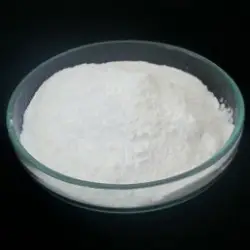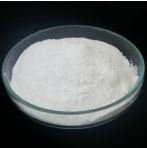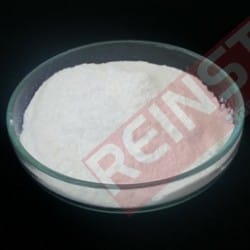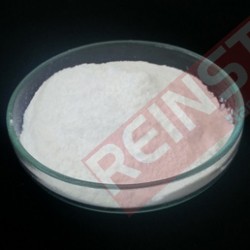Why Choose Nano Aluminum Oxide for Battery Manufacturing?
In the relentless pursuit of superior energy storage solutions, the materials that constitute our batteries play a pivotal role. As demand for higher performance, longer-lasting, and safer batteries continues to surge across sectors like electric vehicles, portable electronics, and renewable energy systems, traditional materials are reaching their limits. This comprehensive guide explores why nano aluminum oxide (Nano Al2O3) is emerging as a game-changer in battery manufacturing, offering unparalleled advantages over conventional materials. From enhancing energy density and cycle life to improving safety and thermal stability, discover how this advanced nanomaterial is shaping the future of energy storage.
Explore Nano Aluminum Oxide Products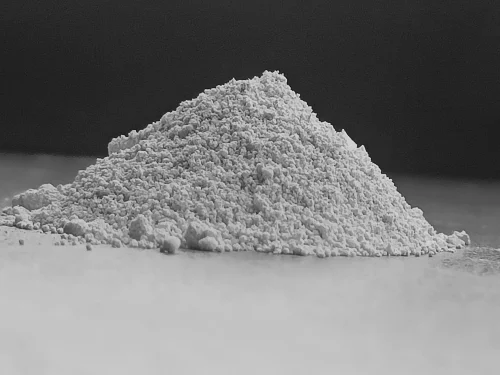
Understanding Nano Aluminum Oxide: Properties and Production
Nano aluminum oxide, also known as nano alumina, is an advanced ceramic material characterized by its exceptionally small particle size, typically ranging from 1 to 100 nanometers. This nanoscale dimension imparts unique nano aluminum oxide properties that are significantly different from its bulk counterpart. These properties include an incredibly high surface area-to-volume ratio, superior hardness, excellent thermal conductivity, and chemical inertness. These attributes make it an ideal candidate for various high-performance applications, especially in the realm of energy storage.
Nano Aluminum Oxide Production Process
The production of high-quality nano aluminum oxide typically involves sophisticated synthesis methods such as sol-gel processes, chemical vapor deposition (CVD), flame spray pyrolysis, and hydrothermal synthesis. Each nano aluminum oxide production process offers distinct advantages in controlling particle size, morphology, and purity, which are crucial for optimizing its performance in battery applications. The ability to precisely control these parameters is key to unlocking the full potential of nano aluminum oxide in advanced technologies.
The Core Benefits of Nano Aluminum Oxide in Batteries
The integration of nano aluminum oxide into battery components, particularly in lithium-ion batteries, offers a multitude of benefits that address critical limitations of current battery technology. Understanding these advantages is key to appreciating how nano aluminum oxide improves battery performance significantly.
Enhanced Safety and Thermal Stability
One of the most critical aspects of battery performance, especially for high-power applications like electric vehicles, is safety. Thermal runaway, a phenomenon where batteries overheat and can catch fire or explode, is a major concern. Nano aluminum oxide acts as an excellent ceramic separator coating material or an additive in electrode materials, providing superior thermal stability. Its high melting point and chemical stability help to prevent direct contact between electrodes during thermal events, significantly reducing the risk of short circuits and enhancing overall nano aluminum oxide safety in battery operation.
Improved Cycle Life and Durability
Batteries degrade over time with repeated charging and discharging cycles. This degradation is often due to structural changes in electrode materials and the formation of unstable solid electrolyte interphases (SEI). By incorporating nano aluminum oxide, especially as a coating, it can stabilize the electrode-electrolyte interface, suppress unwanted side reactions, and mitigate volume expansion/contraction during cycling. This leads to a remarkable improvement in the battery's cycle life and long-term durability, making batteries more reliable for sustained use.
Higher Energy Density and Power Capability
While often used for protective coatings, nano aluminum oxide can also be integrated into electrode active materials. Its high surface area can facilitate better electrolyte wetting and ion transport kinetics. Furthermore, by providing a robust and stable framework, it allows for higher loading of active materials without compromising structural integrity. This contributes to achieving higher energy density, meaning more power can be stored in a smaller volume, and improved power capability, enabling faster charging and discharging rates. These are crucial benefits of nano aluminum oxide in batteries that directly impact user experience.
Nano Aluminum Oxide vs. Traditional Aluminum Oxide
The distinction between nano aluminum oxide vs traditional aluminum oxide is profound. Traditional aluminum oxide, while a good insulator, lacks the high surface area and quantum effects present at the nanoscale. Its larger particle size limits its ability to form uniform, ultra-thin coatings or integrate intimately with electrode materials without impeding ion flow. Nano aluminum oxide, with its superior surface reactivity and ability to form dense, protective layers at very low thicknesses, offers a level of performance unachievable with conventional forms. This makes it indispensable for modern high-performance batteries.
Recent Major Nano Aluminum Oxide Applications in Batteries
The versatility of nano aluminum oxide extends across various battery chemistries and components, demonstrating its broad impact on the energy storage landscape. Its unique characteristics are leveraged in diverse nano aluminum oxide applications.
Lithium-Ion Batteries (LIBs)
The most prominent application of nano aluminum oxide is in nano aluminum oxide lithium batteries. It is widely used as a coating material for separators, cathodes, and sometimes anodes. For separators, a thin layer of nano Al2O3 enhances thermal stability, prevents dendrite formation, and improves wettability with electrolytes. On cathodes (e.g., NMC, NCA), nano Al2O3 coatings protect the active material from electrolyte decomposition, reduce transition metal dissolution, and improve cycling stability, especially at high voltages and temperatures. This directly contributes to longer-lasting and safer LIBs for devices ranging from smartphones to large-scale energy storage systems.
Solid-State Batteries
Solid-state batteries are considered the next generation of energy storage due to their potential for higher energy density and inherent safety. Nano aluminum oxide plays a crucial role here, particularly in developing stable solid electrolytes and protecting electrode interfaces. Its excellent ionic conductivity (when doped) and mechanical strength make it a promising component for solid-state electrolyte composites, addressing challenges like interface resistance and volume changes during cycling. This is a significant area for nano aluminum oxide innovations.
Beyond Lithium-Ion: Other Battery Chemistries
While LIBs are a primary focus, nano aluminum oxide is also being explored in other advanced battery chemistries. In sodium-ion batteries, it can help stabilize electrode structures and improve cycling performance. For flow batteries and supercapacitors, its high surface area and chemical stability can enhance electrode kinetics and overall device efficiency. This demonstrates its potential for broader nano aluminum oxide for energy storage solutions.
Economic Aspects and Market Trends
Beyond performance, the economic viability and market adoption of nano aluminum oxide are crucial for its widespread use. The nano aluminum oxide cost efficiency is a key consideration for manufacturers.
Cost Efficiency and Scalability
While the initial cost of nanomaterials can be higher than traditional counterparts, the long-term benefits derived from enhanced battery performance, extended lifespan, and improved safety often lead to a greater overall nano aluminum oxide cost efficiency. Reduced warranty claims, fewer replacements, and the ability to achieve higher performance metrics per unit volume or weight can offset the initial investment. As nano aluminum oxide manufacturing techniques advance and scale up, production costs are expected to decrease, making it even more economically attractive.
Market Trends and Research Studies
The global market for nano aluminum oxide is experiencing significant growth, driven by increasing demand from the battery, electronics, and automotive sectors. Numerous nano aluminum oxide research studies are continuously uncovering new applications and optimizing existing ones, particularly in the energy storage domain. The emphasis on sustainable and high-performance battery solutions for electric vehicles (nano aluminum oxide for electric vehicles) and grid-scale renewable energy systems (nano aluminum oxide in renewable energy systems) is a major driver of nano aluminum oxide market trends. Companies are actively seeking reliable nano aluminum oxide suppliers to meet this rising demand.
Future Outlook and Innovations
The journey of nano aluminum oxide in battery technology is far from over. Continuous research and development are pushing the boundaries of its capabilities.
Advanced Coatings and Composites
Future innovations will likely focus on even more sophisticated nano aluminum oxide coatings, including multi-layered structures and hybrid composites that combine nano Al2O3 with other nanomaterials for synergistic effects. These advanced coatings will further enhance interfacial stability, ion transport, and mechanical robustness.
Role in Electronics and Beyond
While batteries are a major focus, the impact of nano aluminum oxide in electronics extends to various components like dielectric layers, thermal management materials, and polishing agents. Its versatility ensures its continued relevance in the broader electronics industry, often complementing its role in power sources.
Sustainability and Environmental Impact
As the industry moves towards more sustainable practices, the environmental footprint of materials becomes important. Nano aluminum oxide is inherently stable and non-toxic, making it a relatively environmentally benign material compared to some other battery components. Research is also focusing on greener nano aluminum oxide production process methods to further reduce its ecological impact.
Frequently Asked Questions (FAQs)
Ready to Innovate Your Battery Technology?
Explore our range of high-quality nano aluminum oxide products designed to elevate your battery manufacturing processes and unlock new levels of performance and safety.
View Nano Aluminum Oxide ProductsGet in Touch
Have questions or need a custom solution? Contact our experts today.

